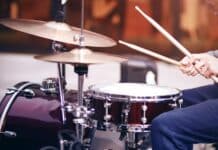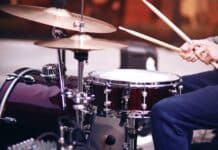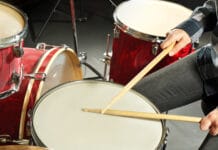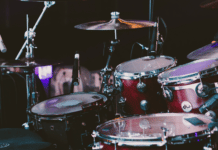Do you want to add more excitement and energy to your music and have no idea where to start? Percussion instruments provide the beat and rhythm that keep the music moving and add interest and variety to the sound. There are many percussion instruments, each with its unique sound and purpose. So, whether you’re looking to add some spice to your band or want to try something new, the following percussion instruments list is a great place to start.
Timpani
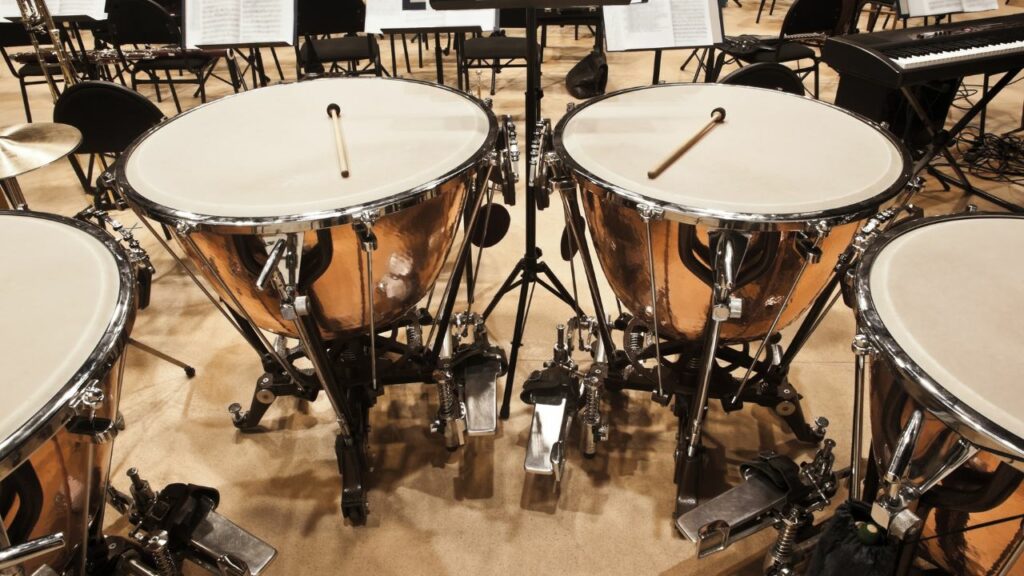
Also known as “timps” or “kettle drums,” timpani are a kind of hemispherical drum that are common in orchestras and marching bands. They have large bowls and membranes traditionally made from animal skins. Less expensive models use plastic membranes.
A distinguishing feature of the timpani is that its pitch is controlled by foot pedals. Pedal systems can be grouped in three categories: ratchet clutch system, friction clutch system, and balanced action system. Each system has its own pros and cons for the timpanist.
Xylophone
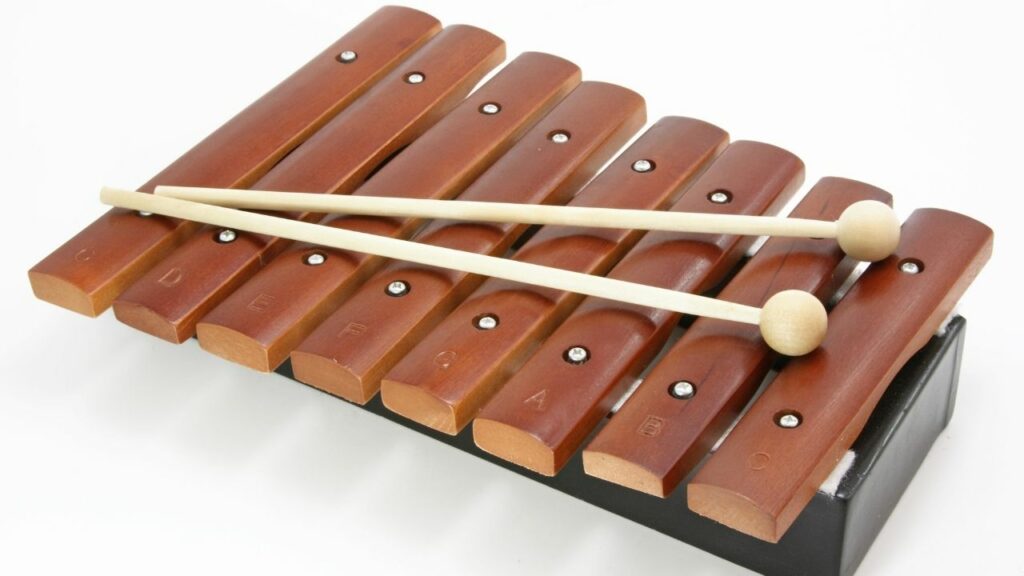
It feature resonators beneath each wooden bar. So, when you hit this instrument with a mallet, it emits a bright bell-like sound. This idiophone instrument typically includes more than three octaves. If you use different mallets, you can alter the quality of the pitch it produces.
Fun info: A metal version of a xylophone is called a Glockenspiel.
Triangle
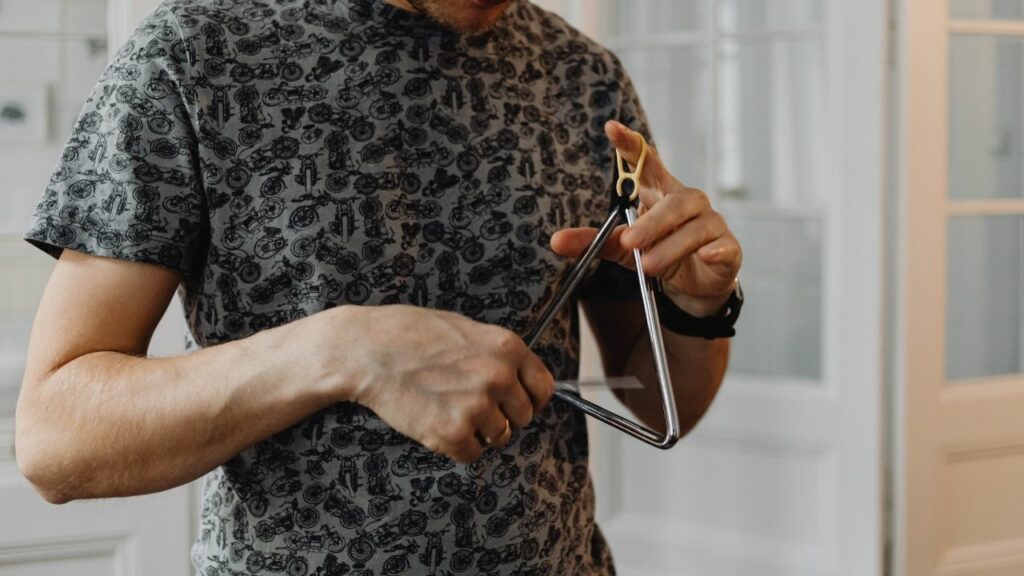
Triangle or triangle bell was traditionally a dinner bell. And, as its name suggests, it’s a triangular shaped idiophone instrument made from either steel or cast iron. You can play the triangle by hitting the triangle with a short metal stick.
Tambourine
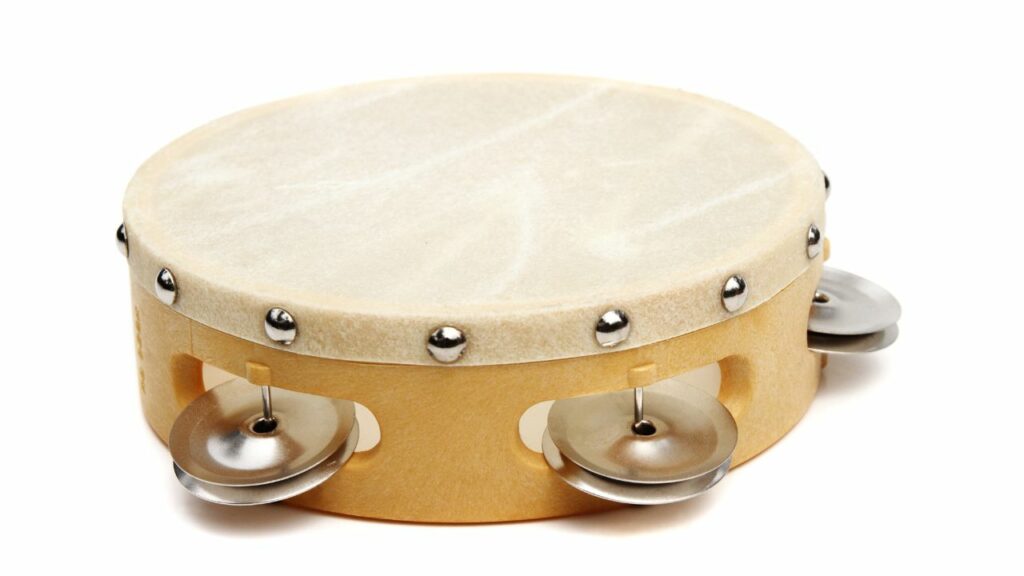
Tambourines have been around since 1700 BC, and they’ve taken many forms since then, including some that aren’t actually membranophones. For example, the jingly plastic tambourines that you played in elementary school are considered idiophones; their sounds are produced by vibrating objects, not vibrating membranes.
Tambourines with membranes do exist, however, and they exist around the world. In Arabic music, they’re known as riqs. In Russian music, they’re known as bubens.
Gong
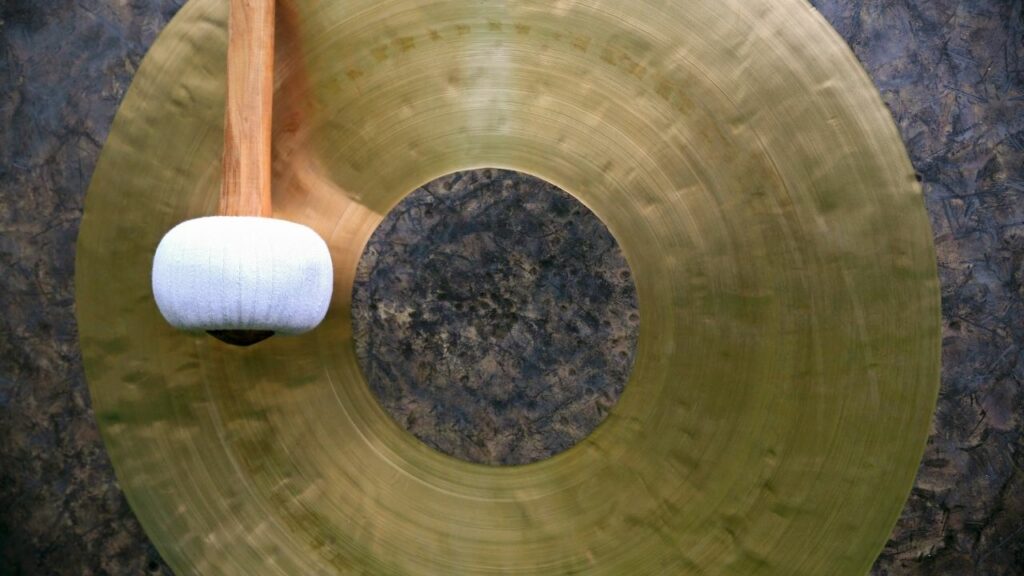
Originating East and Southeast Asia, this circular, flat disk struck with a mallet, issues a loud and resounding sound. The note of a gong sounds for many counts unless stopped. These large disks hang from a supporting post. Some progressive rock bands and jazz ensembles use the gong. The instrument became famous in popular times when featured on an entertainment show called The Gong Show.
Bass Drum
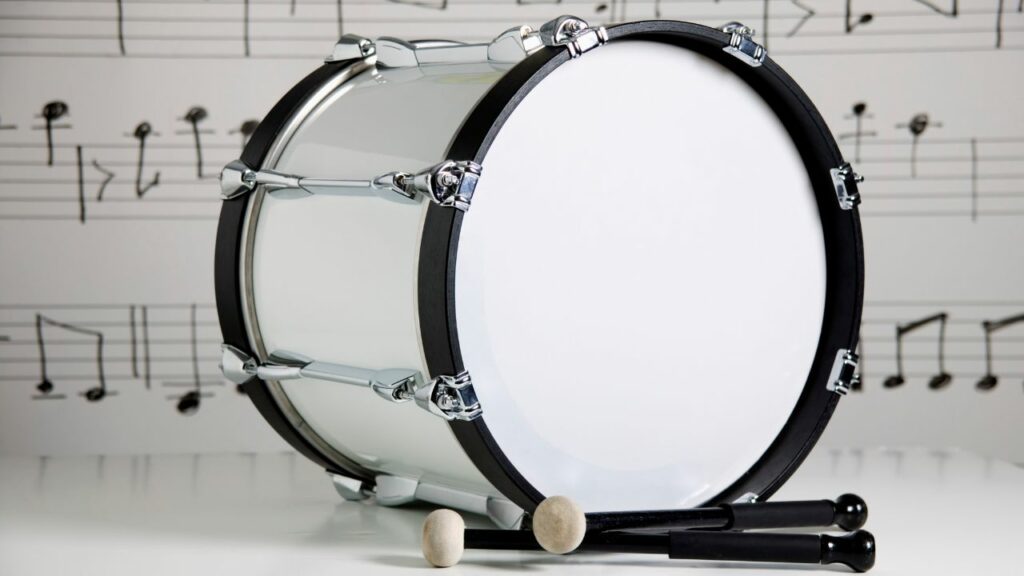
Also called “kick drums,” bass drums are another one that you’ll find on many membranophone instruments lists. While not as recognizable as, say, snare drums, they’re still part of your standard five-piece drum kits.
Snare Drum
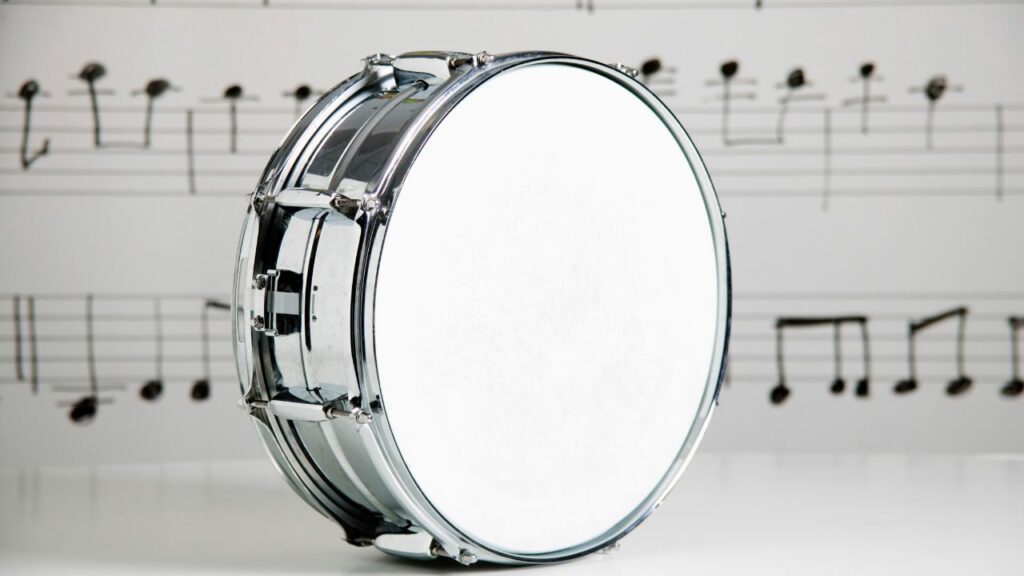
You’ll find snare drums on most membranophone instruments lists. They’re the most widely recognized drums in both appearance and sound, and they’re ubiquitous in rock bands, orchestras, drum lines, and more.
Castanets
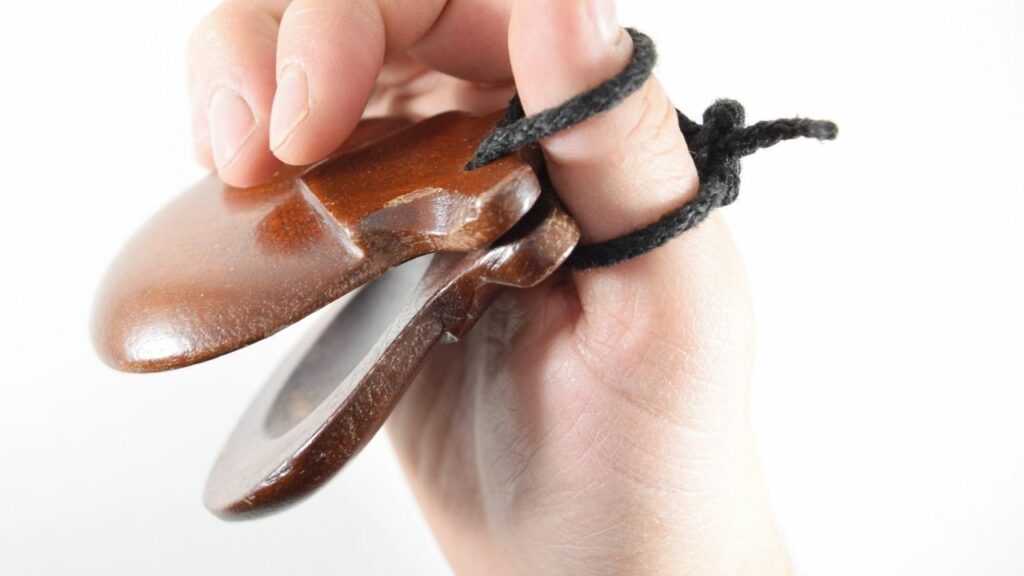
The castanet stems from the Mediterranean, although it originated in Phoenicia in about 1000 BC. This idiophone musical instrument comes with two hollowed-out shells, bones, or ivory held together by a rope. You can play castanets by inserting the loops through your thumb and then using your other fingers to close and hit the shells together.
Wood Block
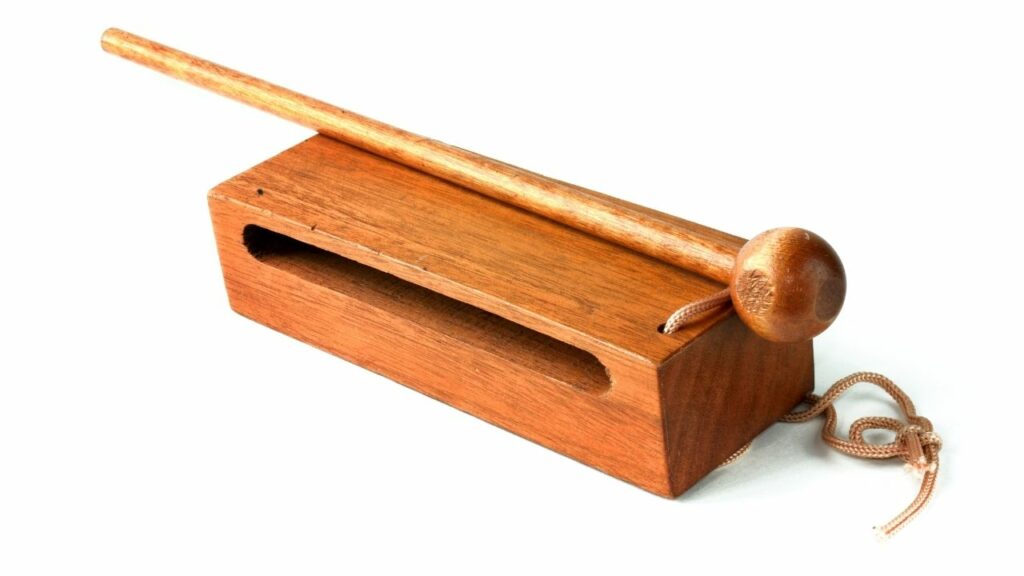
Wood block, as its name suggests, is an instrument featuring a block of wood. This common aboriginal instrument features a slit in its center and can produce sound when you hit with a mallet. This idiophone instrument is common heard in Dixieland music.
Marimba
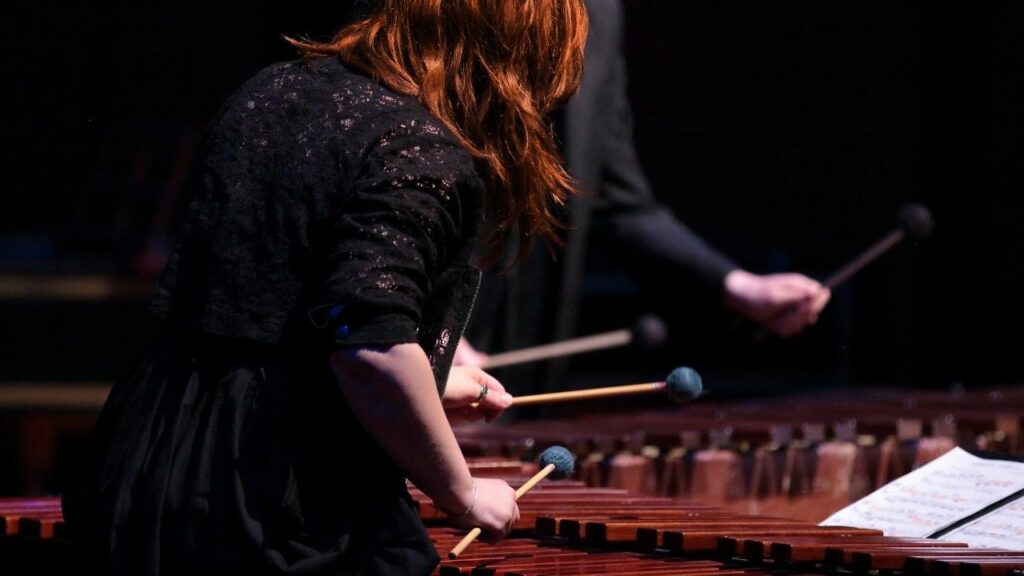
The African musical instrument the marimba strongly resembles a xylophone. A traditional marimba uses wooden bars with a tuned calabash resonator beneath each. In Latin America, musicians adopted the design but replaced the calabash with gourds.
When crafted for use in the orchestra, this six-and-a-half-octave instrument combines wooden bars attached to a frame with tube or metal resonators beneath each bar. Some marimbas hang around the player’s waist.
Bongos
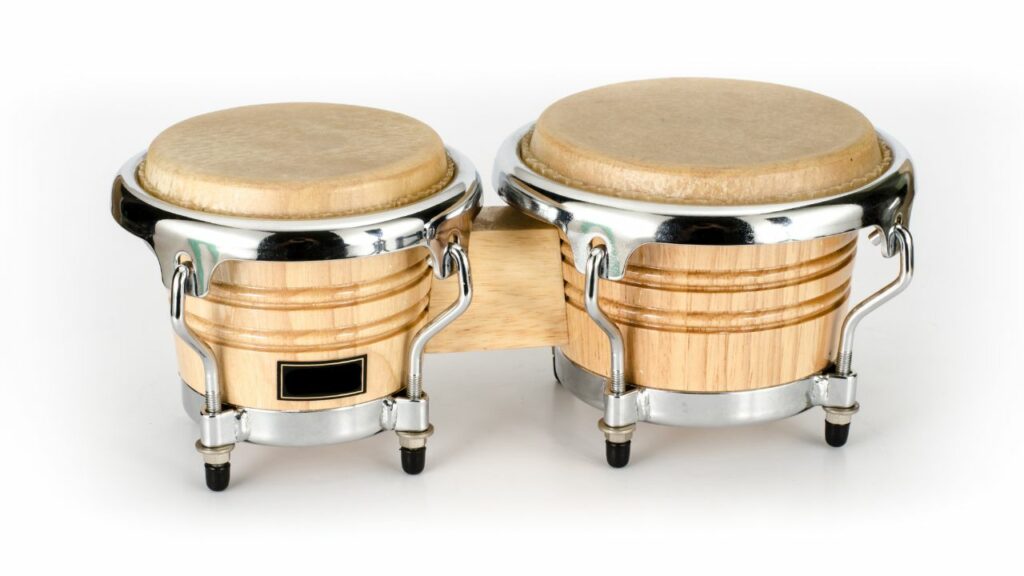
A staple of Afro-Cuban music, bongos are small, open-bottomed drums that are played by hand. Players are called bongosero. Despite their fun, jaunty sounds, they’re capable of producing very complex sequences of music, including the eight-stroke pattern known as martillo or “hammer.”
Cymbals
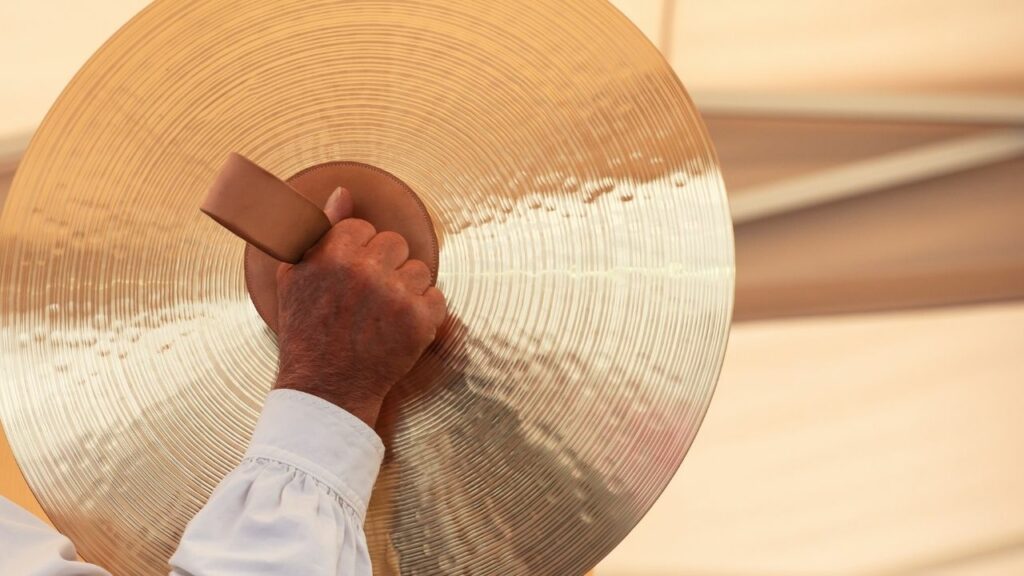
A cymbal may take the form of a single hollow round plate of metal or two such plates coupled so that the hollows meet. It may also attach to a rod and function as a part of a drum kit, such as rock and country band use.
Tamak
It’s a traditional double-headed drum played by the Santal people, and it produces a deep, rich sound that often serves as the bass for rhythmic dancing.
Kazoo
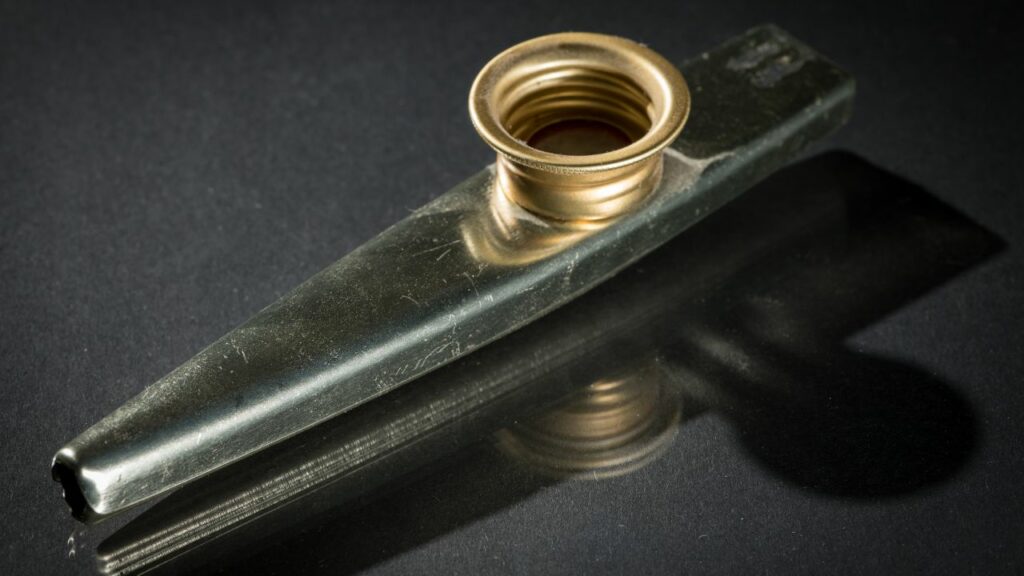
You might think of the kazoo as a wind instrument, but it’s actually a membranophone. It just looks like a flute. You play it by humming rather than blowing, and within its long, cylindrical air chamber, the oscillated air strikes a membrane and produces sound. You can also produce other sounds on the kazoo with wordless vocalizations such as “doo,” “too,” “rrr,” and “brr.”
Snare Drum

You’ll find snare drums on most membranophone instruments lists. They’re the most widely recognized drums in both appearance and sound, and they’re ubiquitous in rock bands, orchestras, drum lines, and more.
Djembe
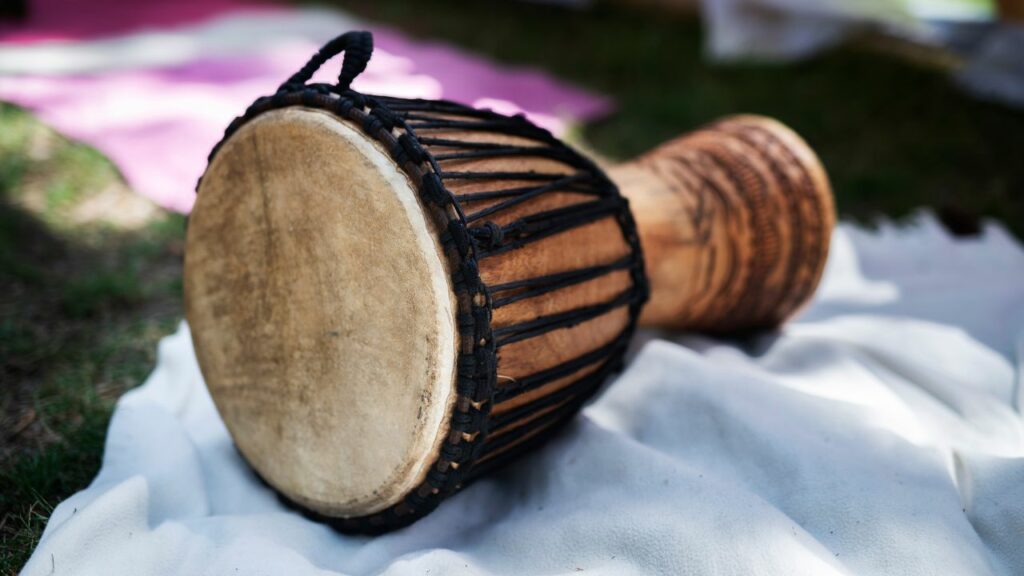
The name djembe comes from a West African phrase that translates to “everyone gather together in peace,” which is said to be the purpose of the djembe. Playing it is also described as “making the djembe talk.”
The djembe has a loud, distinctive sound that can be easily heard over other instruments, making it ideal for rhythmic chants and festive dances.
Bass Drum

Also called “kick drums,” bass drums are another one that you’ll find on many membranophone instruments lists. While not as recognizable as, say, snare drums, they’re still part of your standard five-piece drum kits.
Tom-Tom
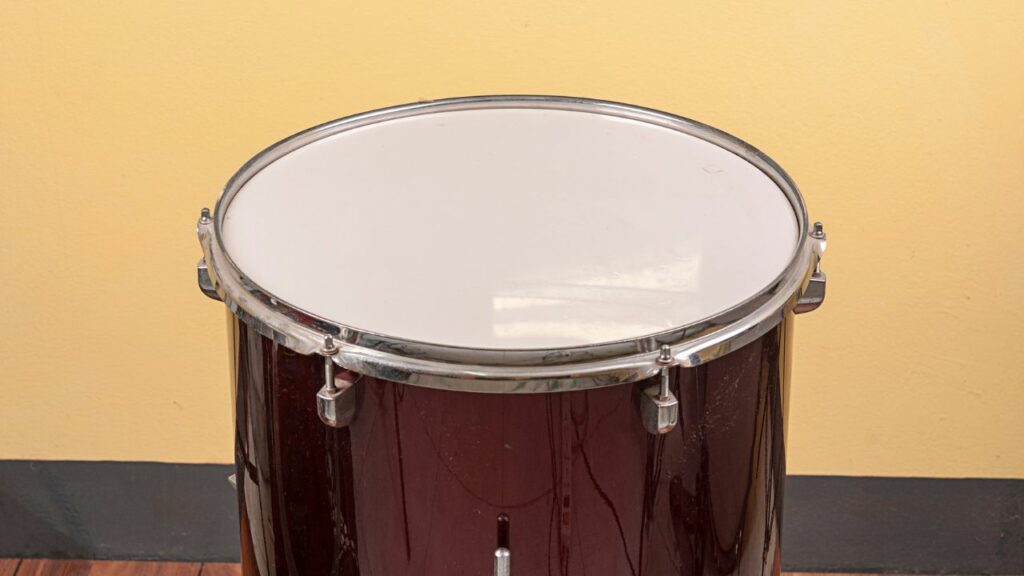
Another essential piece of 21st century drum kits, tom-toms are cylindrical drums that can be tuned to various pitches. They were originally brought to the U.S. in the 1800s by immigrants from around the globe.
Tabla

The tabla are small twin drums played by hand. Originally hailing from India, they’ve become popular all across Asia and the Middle East, and you can find them played today everywhere from Bangladesh to Sri Lanka. The word tabla actually comes from the Arabic word tabl meaning “drum.”
Chimes
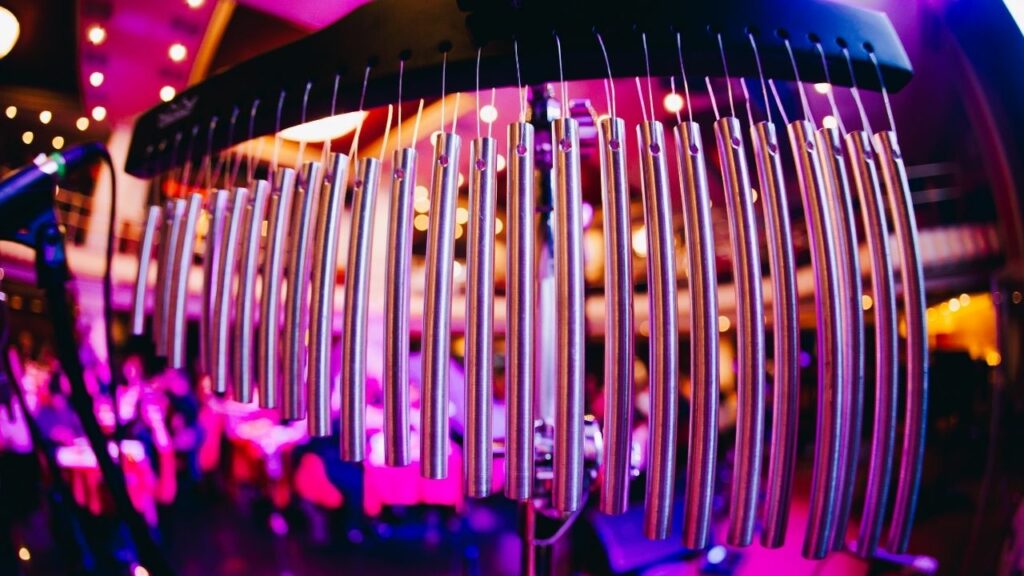
In an orchestra or band, a set of chimes may hang from a block of wood or sit on a platform of wood. To create the musical vibration, the player uses a small stick with a rounded end called a mallet. A set of chimes typically includes eight-round, metal chimes with a hollow center. This provides the player with a full octave range of notes.
Cowbell
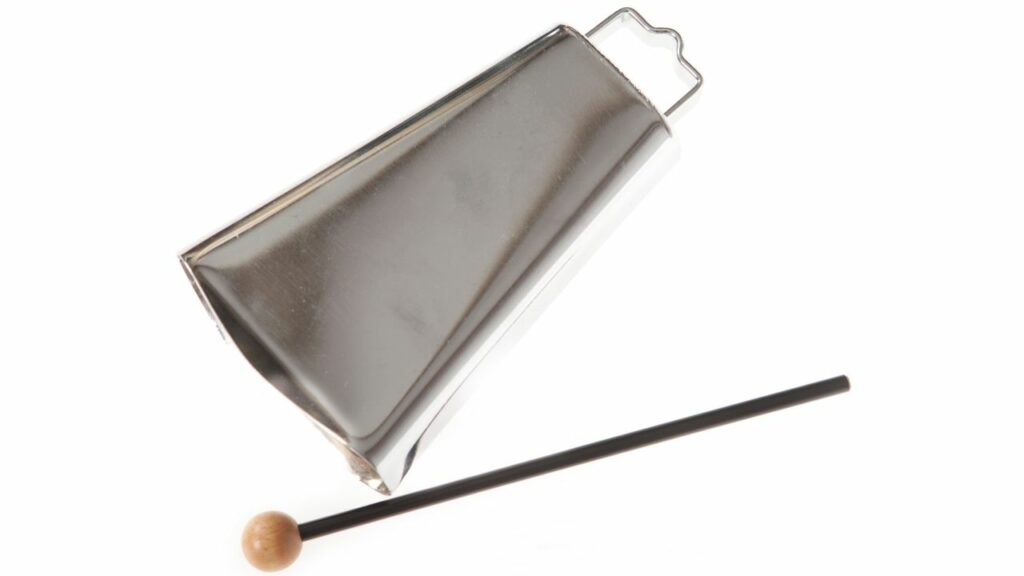
The single and double cowbell offer a hand percussive instrument that originally aided herdsmen in tracking their flocks. Those vibrations came from a metal mallet inside the metal bell hung on a cow’s or oxen’s neck. Classical music initially adopted the metal bell to create a quick, single note using a separate mallet to strike the outside.
Slit Drums

Unlike other percussion, these wooden drums is drum head free. As a matter of fact, a slit drum has a hollow sculpture with three narrow groves or slits shaped like an H. The ends of the drum are closed and typically can produce two different pitches.
Tubular Bells
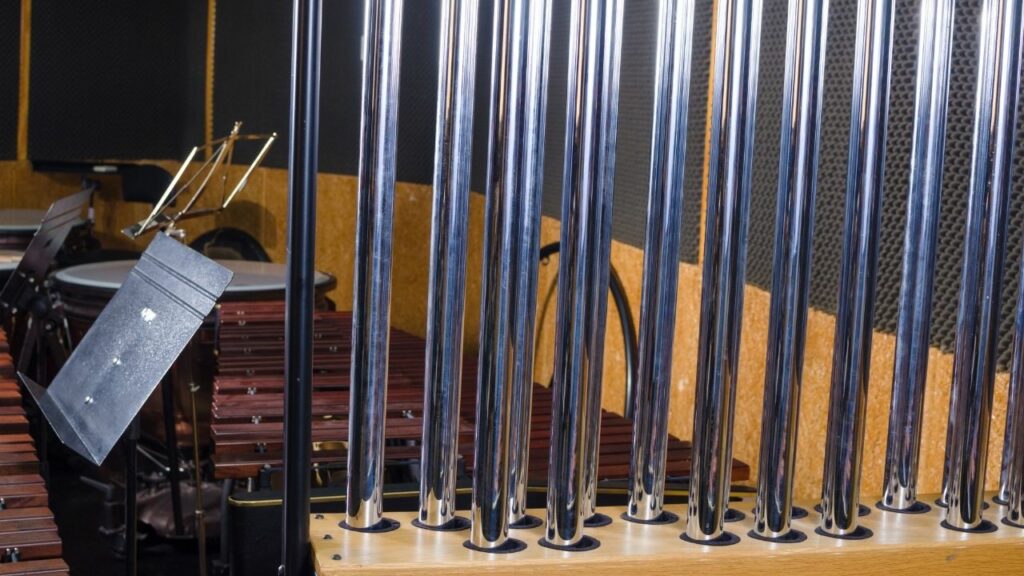
Tubular bells look like chimes when they take the hanging form but typically include a two-octave range or 16 distinct metal tubes. A hand percussion version also exists though that resembles a pipe twisted into an X shape with one side solid pipe. Musicians also refer to tubular bells as orchestral bells. They emit a sound similar to church bells or a carillon when struck with a mallet.
Maracas
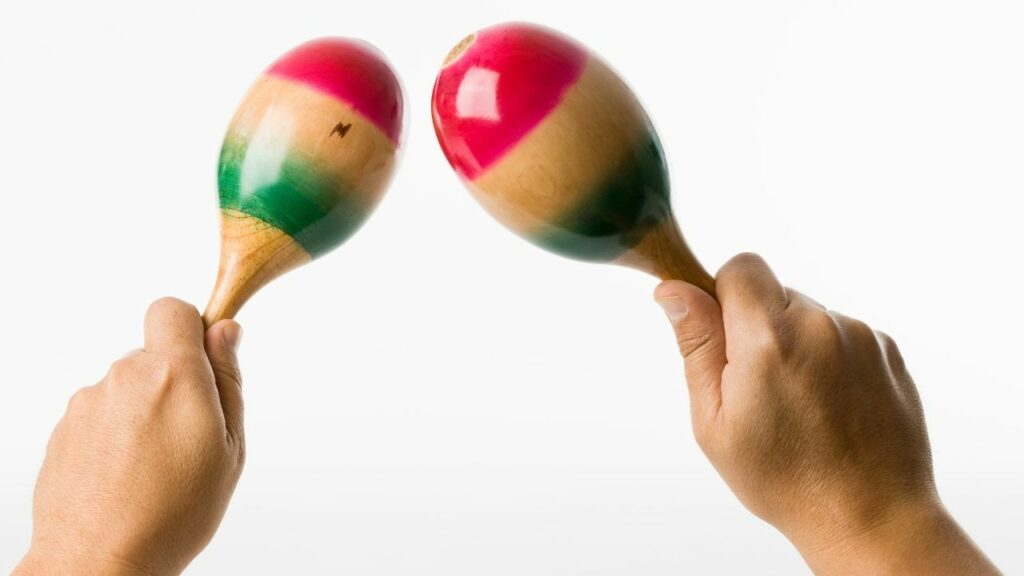
The gourd rattle called maracas stems from South American and Latin music, especially their orchestras. Typically egg or oval in shape, the objects sealed inside create a rattling sound when shaken. The materials used within the gourds vary from beans, stones to beads.
Vibraphone
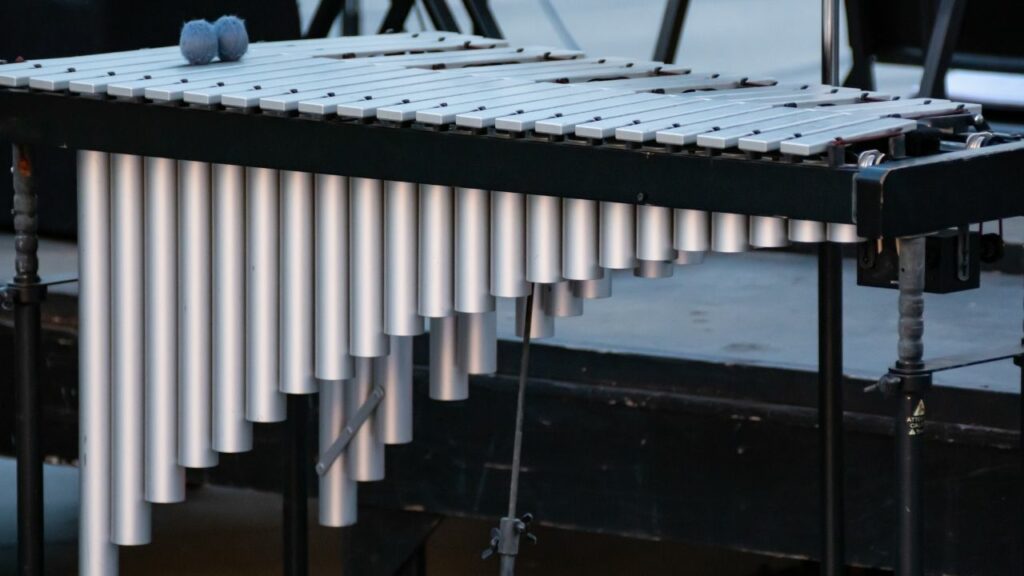
The musical instrument vibraphone, also known as the vibraharp or vibes, shares its shape with the xylophone. It uses metal bars and mallets covered in wool or felt to strike the metal which has a tuned, tubular resonator beneath it. Striking the metal creates a mellow tone. The resonator helps the vibraphone bars sustain the tones for long note counts.
Handpan
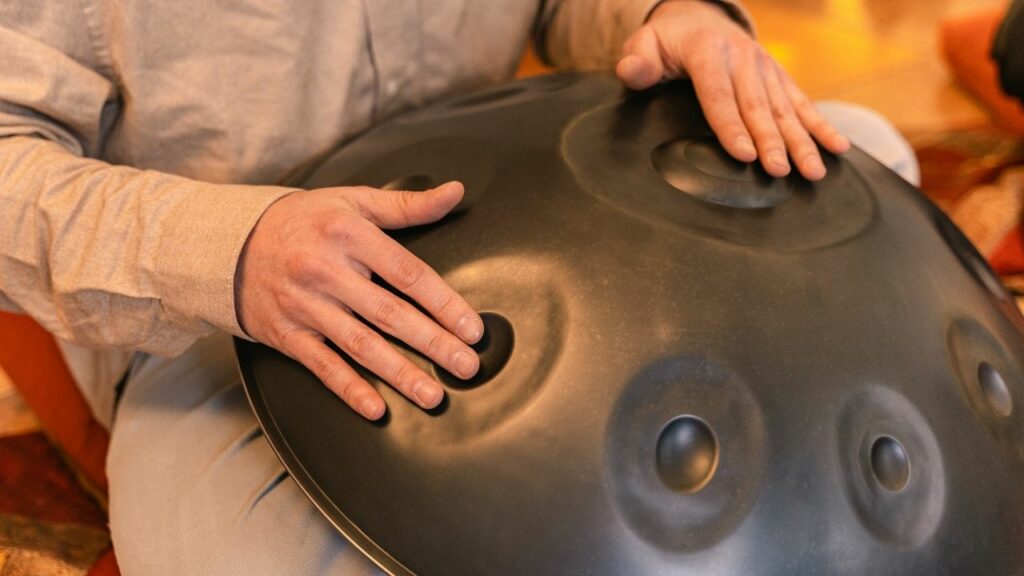
The handpan or hang drum only came to existence in 2001. This idiophone instrument uses a lenticular shape similar to a turtle shell or an upside-down wok. It creates a soft sound similar to raindrops when struck with your hand.
Final Analysis
So there you have it! A crash course in percussion instruments. We hope this percussion instruments list has inspired you to try something new! Remember, percussion is a great way to add interest and different notes to your sound, so don’t be afraid to experiment with different types of instruments. Who knows, you might find your new favorite sound.
Table of Contents

